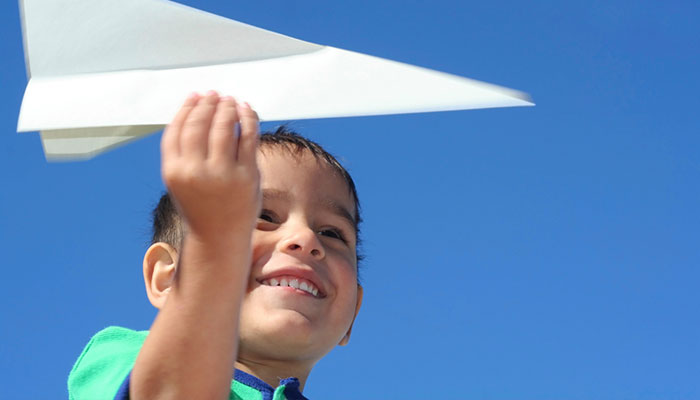While we believe that the books and resources recommended may be of value to you, keep in mind that these are suggestions only and you must do your own due diligence to determine whether the materials are appropriate and suitable for your use. PNC has no sponsorship or endorsement agreement with the authors or publishers of the materials listed.

TRANSPORTATION
Airplanes
Children will experiment with paper airplanes.

Lesson Objective
Children will experiment with making paper airplanes and discover how their shape makes them fly.
Science
What You'll Need
- Pictures of a flying bird, a flying insect, an airplane, a jet, and a rocket ship
- Plain white paper
- Cardboard
- Markers and crayons
What To Do
- Display pictures of things that fly. Encourage the children to look closely at the pictures. Ask children to brainstorm on what is the same about all of the items (see Did You Know?). Challenge the children to find things that are the same about the various shapes (e.g., all have wings, all have noses or pointy heads).
- Tell children that they are going to experiment with paper to make something that can fly.
- Pass out a sheet of plain white paper to each child, and ask if the paper will fly. Allow the children to try it.
- Pass out the cardboard. Ask if this will this fly, too.
- Ask the children what they can do to make the paper fly better. Suggest folding the paper to see if they can make it fly better.
- Tell the children to remember something that was the same about the pictures of the flying things, and suggest that they might need to make those same things on their paper airplanes.
- Encourage the children to think about how they can fold the paper to make wings (or a nose/pointy head).
- Challenge the children to find a way to test their paper airplanes to make sure that they fly.
- Tell the children that the paper airplanes need a little help from them to fly - thrust and lift. Explain that the children will need to give thrust to their airplanes by gently throwing them forward. Lift is when the air gets under the wings and pushes it up in the air.
- If airplanes do not fly, give children more paper, and let them try again (see Lesson Tips).
Resources
Home School Resources
Home educators: use these printable lesson PDFs to teach this lesson to your home schoolers. They're available in English and Spanish.
Content Provided By
Common Core State Standards Initiative – These lessons are aligned with the Common Core State Standards ("CCSS"). The CCSS provide a consistent, clear understanding of the concepts and skills children are expected to learn and guide teachers to provide their students with opportunities to gain these important skills and foundational knowledge [1]. Visit the CCSS


